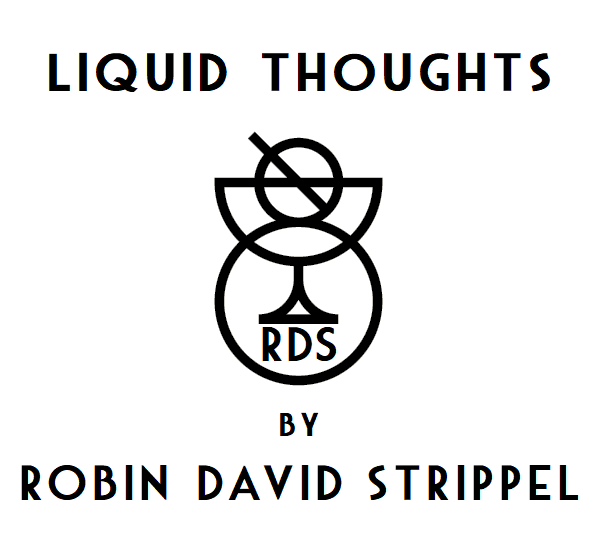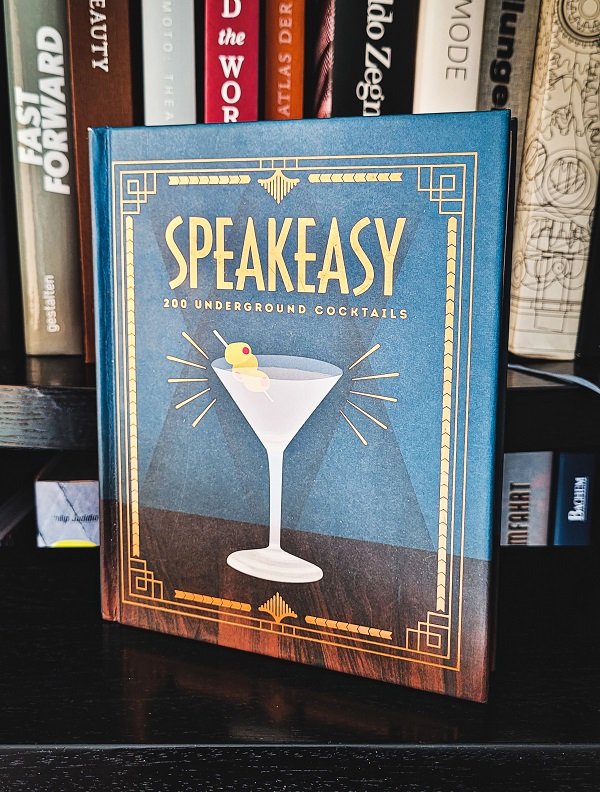Speakeasy - Benny Roff
Speakeasy:
200 Underground Cocktails
Benny Roff / 208 Pages / October 2015
This will probably be a rather short bar book review, as what we discuss here is also a rather simple recipe collection, which is already advertised in the Amazon description among other things with its handy gift size.
The authors background actually promises quite the interesting read, Benny Roff, chef in several recognized restaurants in NYC, San Francisco and Kensington Place in London, dedicated himself from 2006 instead to cocktails and led the Australian bar institution "Borsch, Vodka and Tears" for years.
The title, subtitle and style show directly, this is gonna be a lot about classics, about the 1920s and 1930s flair and thus probably also corresponding drinks, it shows rather little connection to his bar & other career stations, but well, let's see.
The table of contents reads very simple:
"Introduction", which really explains in only 3 sentences briefly what Speakeasy actually means
"Glossary of 1920s Slang”, a double-page, admittedly a funny and nice explanation of 1920s slang terms, i.e. various expressions used then that are no longer common today, from hotsy-totsy (compliment) to half-seas over (very drunk)
"Notes on Some Ingredients", two double pages on maybe 15-20 important spirits, liqueurs and vermouths, just a short explanation of what they are all about
"Some Cocktail Equipment", maybe a new record concerning the shortest tool-list with really only shaker, strainer and mixing glass explained
"Glassware", as usual the 8 main types of glasses
"Syrup & Cordial Recipes", 7 syrups and 2 cordials briefly explained, which appear in the book
One of the classics with its illustration
The recipe section follows, starting with the classic Martini. Here we can see a strange peculiarity, in the table of contents one already wonders whether only 11 (classic) recipes are in the whole book. But no, the recipes are assigned to the classics depending on the base spirit. So the Martini introduces the gin drinks, the Sidecar later the brandy/cognac cocktails, etc. but in the table of contents, however, only those "main drinks" are listed, which is very confusing.
The recipes contain just the most important information needed, name, glass, ingredients, method and only a 4-5 word description as you sometimes see in cocktail menus, e.g. "Tastes strong, sweet and aromatic", sometimes an additional text would have been great. This also leads to some astonishment, because there is not a single reference to the original sources and creators in the nevertheless very many recipes (questionable in itself). But with some drinks, I'm also not sure if they are vintage drinks at all or ones created by Mr. Roff. All of them read as if they could date back to that era, but you can't find a single entry online for some of them, which leaves me unsure and with way too little information.
Since the recipes are very classic, you will be able to make quite a lot of them with a solid house bar & standard spirit collection. Except for the 9 syrups & codials (including easy simple syrup, honey syrup, etc.) there are no other ingredients that need to be "prepared". Although there are a few spirits that won't be in every small house bar, Swedish Punch, China China, Byrrh, etc., not often, but they can show up sometimes.
A good example of the typical page design (although not always this humorous)
The recipes have a certain interesting range within their overall classic corset, I already tried some quite good ones, such as the Fast Boat to Kingston. But there are also very questionable combinations with gin + orange juice and absinthe in the same drink, as you remember them and similiar ones from some vintage bar books and probably not something modern taste buds could accept.
The illustrations are nice, reminiscent of the slightly abstract comic style of the PDT book, here are some more than in the PDT publication, on almost every page. Much within the theme, mafia, 1920s life, sometimes humorous.
That would be the end, because after the recipes comes only the solid index.
Conclusion:
The book has brought up clear points of criticism, especially any lack of sources or notes is annoying and even questionable, outside of the recipes there is virtually nothing, which in itself would also be a point of criticism. With the topic, for example, could have been at least 8-10 pages on Speakeasy & Prohibition, but nada.
So I can recommend this book only in a very limited way, if at all, for advanced hometenders basically not at all (except maybe for 3-5€ used, for the few interesting non-classic recipes in between the other ones), otherwise as a nicely designed, small gift for someone just starting in the hobby, but then he will need another bar basics book as well-
Too bad, from the author behind this one could actually expect something more exciting and well thought out.




